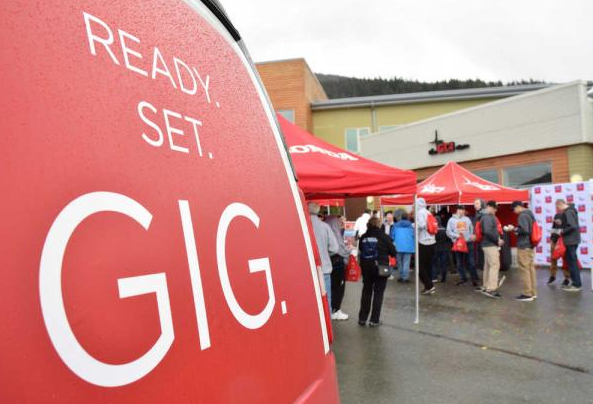Telecommunications companies GCI and ACS will receive millions of dollars over the next 10 years to bring broadband internet to tens of thousands of rural Alaskans.
In conference calls with investors this week, both companies outlined exactly how much they will receive from a $1 billion plan announced by the Federal Communications Commission in August.
GCI will receive $55 million per year for the next 10 years; ACS will receive $19.7 million per year during that same period.
“In exchange for receiving this support, we expect to deploy broadband to 26,000 new unserved locations over this 10-year period,” said ACS CEO Anand Vadapalli.
In an investor call Wednesday, ACS reported modest third-quarter earnings gains and in year-over-year totals. ACS’ earnings before interest, taxes, depreciation and amortization were $13.9 million in the quarter that ended Sept. 30. Last year’s third-quarter earnings were $12.6 million. For the year to date, ACS has earned $41.8 million. Last year, the same figure was $36.1 million.
On Thursday, GCI reported declines. In the third quarter this year, GCI earned $78.2 million; in the third quarter last year, its earnings were $96.5 million. For the year to date, GCI has earned $220.3 million, as compared to $259.8 million in the same period last year.
Reflecting nationwide trends, GCI figures show a drop in the number of cable TV customers and the number of landline telephone customers. ACS also reported a continued decline in the number of landline telephones, and both companies reported growth in the number of broadband internet customers when compared to the same time last year.
GCI depends upon residential customers to a much greater degree than ACS. Consumer revenue makes up only 17 percent of ACS’ business.
GCI showed 127,000 residential cable modem customers on Sept. 30, as compared to 124,300 for the same date last year.
At the same time, the number of landline phones dropped from 51,000 to 49,000 and the number of cable TV customers dropped from 173,100 to 163,300.
Reflecting the state’s gradually rising unemployment rate, GCI figures show a rise in the number of cheaper cellphone plans and a decline in more expensive plans.
The number of “lifeline” wireless customers has risen by 600 in the past year, and the number of prepaid plans has risen by 2,500. Meanwhile, the number of post-paid “bill me” plans has fallen by 5,600, and the number of business phone lines has dropped by 2,900.

